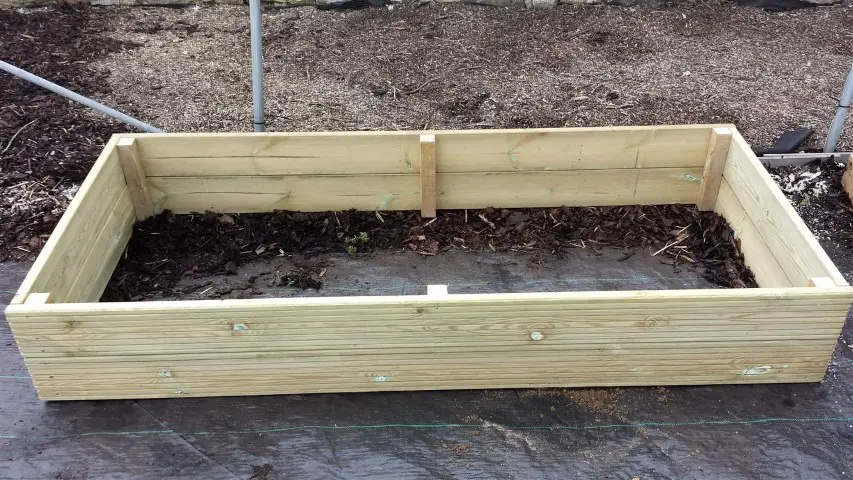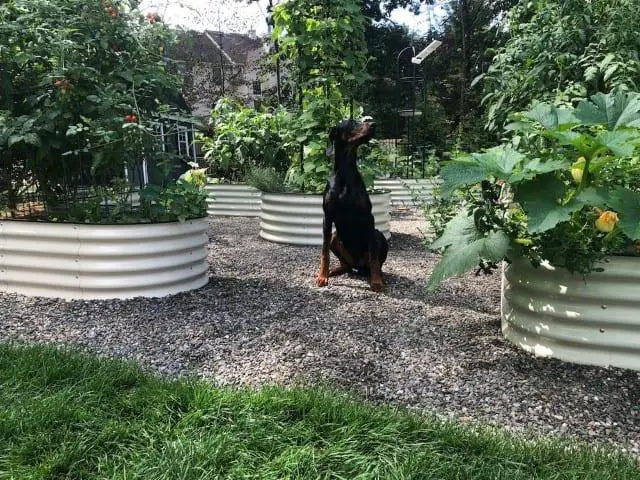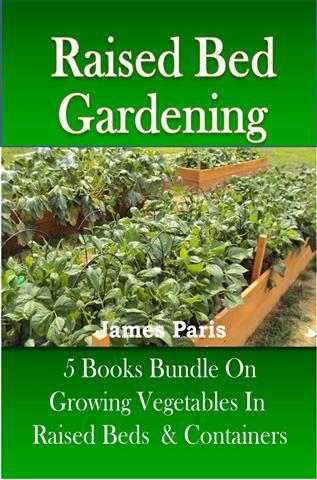There are a few different ways to construct a Raised Bed Garden, some of which are called ‘raised garden beds’ which differ from the former in that they do indeed have a bottom as they are generally raised from the ground on legs.
With a traditional raised bed however the bottom is open because the raised bed rests on the ground, and only consists of a framework that serves as a container into which a compost mix is added.
The answer to the question however, is that Raised Beds must have bottoms if they are free standing on legs, otherwise the soil would simply pour through the bottom!
With a Raised Bed garden that is sat on the ground then a bottom on the bed is not essential, but in some cases it may be beneficial to add a bottom of sorts.
Reasons why you may wish to add a base or bottom to your Raised Bed include the following…
- Suppressing weeds: A covering or base on your bed will help with suppressing invasive weeds that may grow up through the soil, especially if your bed is less than 6 inches deep.
- Rodent or pest control: A bottom covering will prevent burrowing rodents like moles, voles, field mice, or rats from destroying your bed and nibbling on your vegetables.
- Stop nutrient loss: losing the valuable nutrients from your compost mix can be reduced greatly if you have a ground covering that will slow up the seepage and subsequent nutrient loss from your Raised Bed.
What to put under a Raised Bed Garden
First of all you have to consider what the surface is like where you are locating the bed, and why exactly you are adding a covering to begin with.

For example a Raised Bed positioned upon a concrete or paving surface does not have to bother with a covering of any sort as the base is already set in place.
If however you are placing your bed on a grass or soil surface then you could consider a number of options depending on whether you wish to prevent burrowing critters, or just stop weeds from coming up through your soil.
Some materials you can use to add a barrier to the base of your bed include…
- Landscape fabric: There are many choices of weed suppressant fabric available if you just wish to stop the weeds from growing through your soil.
- Chicken mesh: Galvanised or stainless steel chicken mesh at ½ inch will stop most critters like moles, rats, or gophers. Very small ¼ inch mesh will stop mice or voles.
- Cardboard or newspaper: A layer or 2 of cardboard or several layers of newspaper not only make an excellent weed barrier, but worms love cardboard so you will introduce beneficial worms that aerate your bed, and the cardboard will eventually add to the bedding compost.
- Mesh hardware cloth: This sturdy material will keep out burrowing critters and weeds and the same time, and will last for many years in your Raised Bed.
Should you line a Raised Bed
There is a lot of divided opinion regarding lining Raised Beds, especially for the ‘plastic conscious’ gardener. Most of the time I would say that a timber Raised Bed does not have to be lined, however if that bed has been built with railway sleepers impregnated with creosote for instance – then definitely line with black builder plastic and NOT landscape fabric as most folks will recommend for lining.

The reason for this is simple. Plastic will stop any of the wood treatment from leaking into your bed – weed fabric will not, as it is designed specifically to allow liquid through.
This ‘plastic lining advice’ applies to any treated timber that you are unsure about.
Plastic lining will also help prevent your timber from soaking up the moisture in the bed, this is especially the case in dry or windy regions where the need to water constantly can create problems.
Also in high Raised Beds of over 12 inches high, I would usually line the bed with plastic as it definitely helps with moisture loss and to a certain degree helps with the lifespan of the timber structure.


